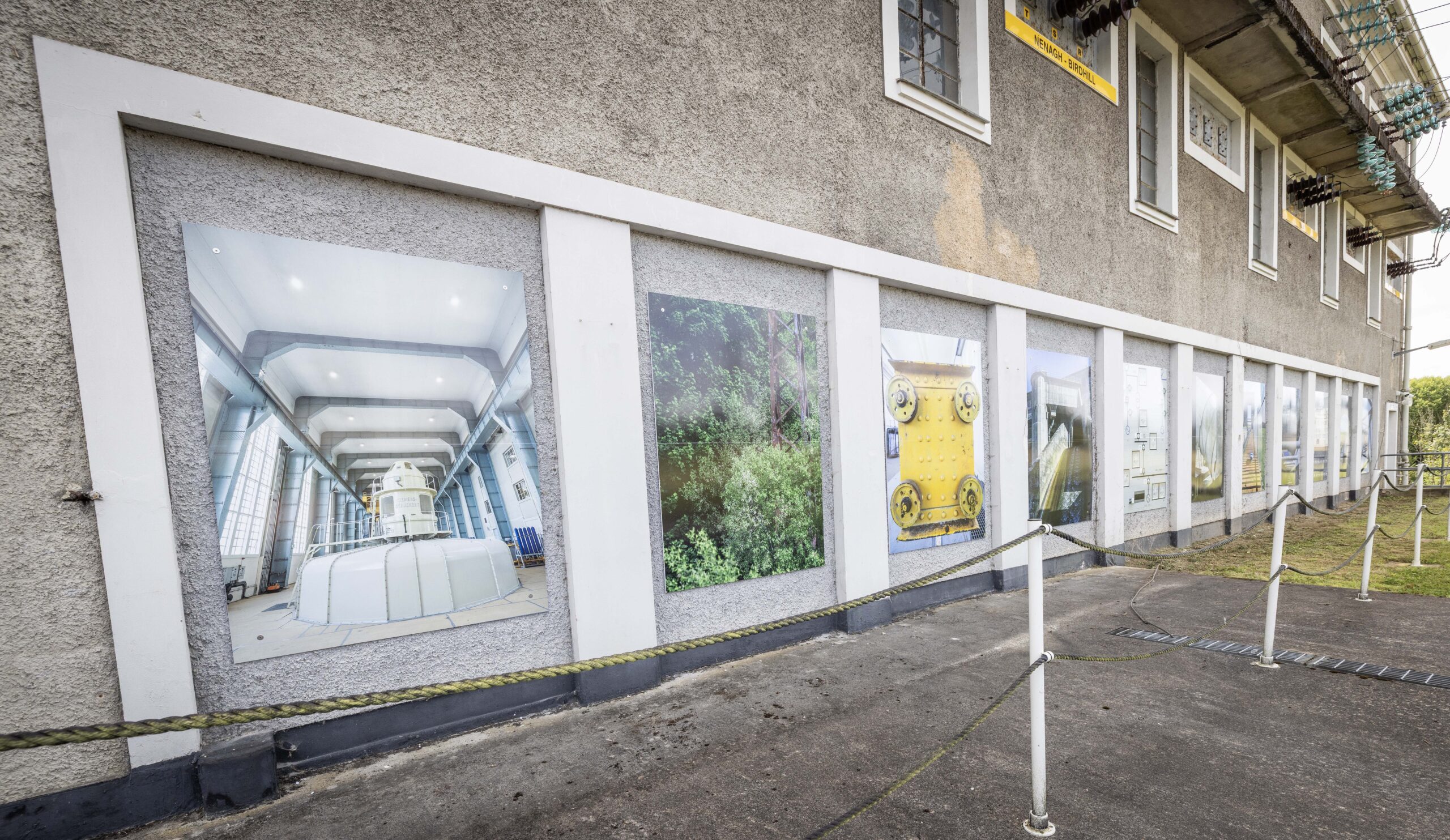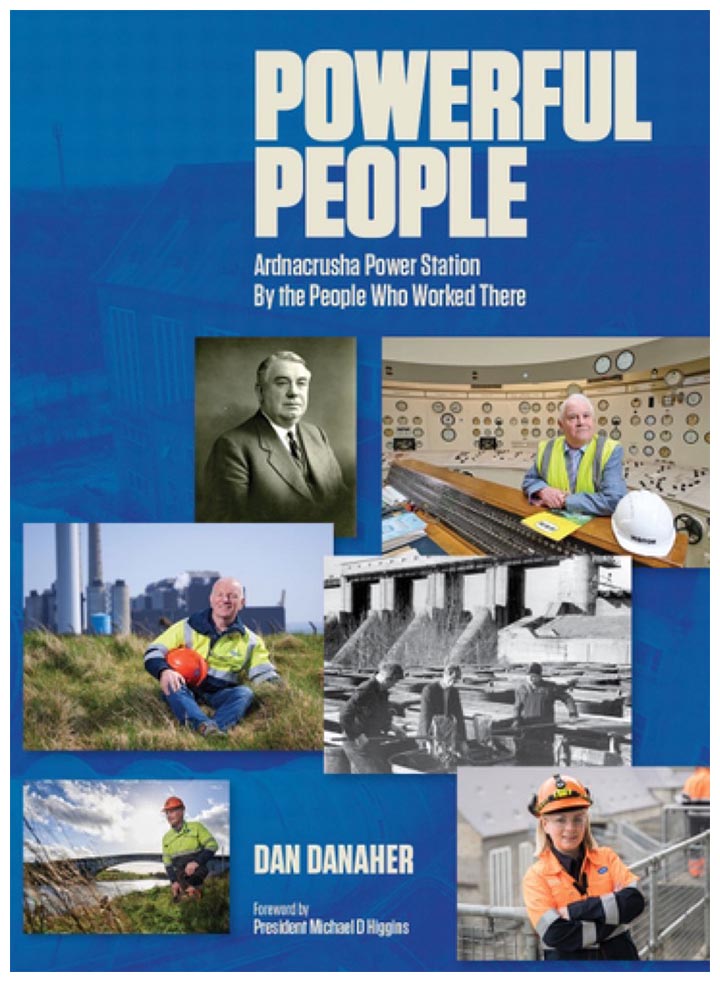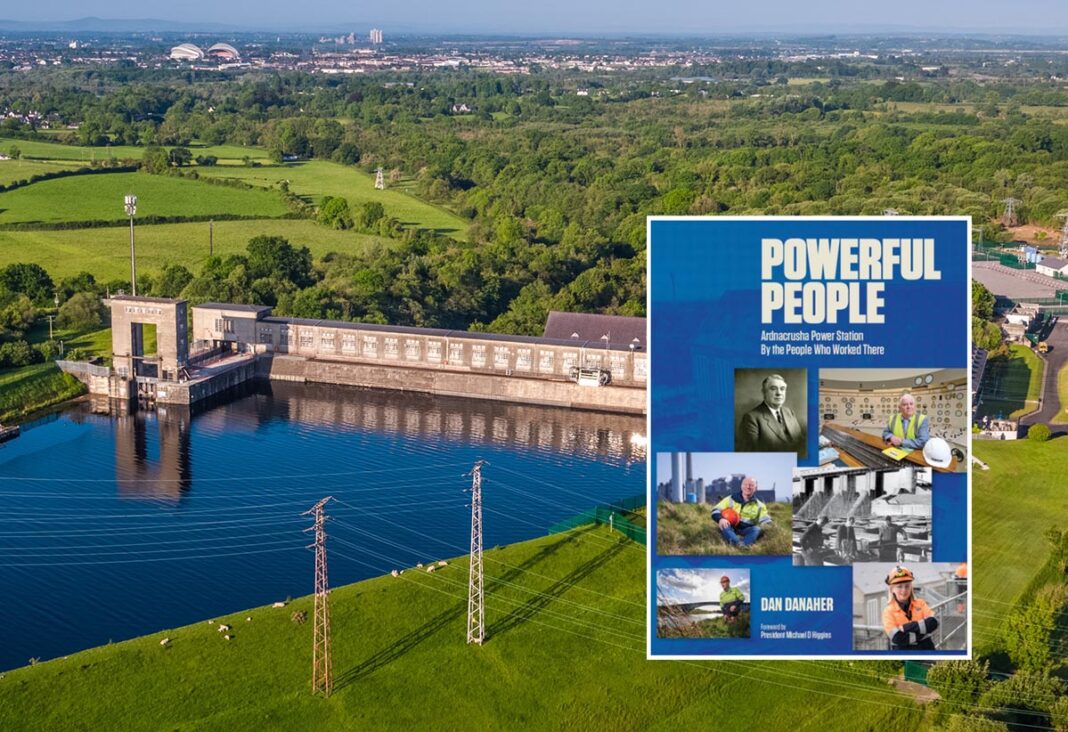When President W T Cosgrave turned on power at Ardnacrusha Hydroelectric Station on July 22nd 1929, it kickstarted an exciting era for the new state.
Inside the heart of Ireland’s industrial revolution lies a story of extraordinary human achievement.
“Powerful People” unveils the remarkable lives of those who built, operated, and sustained the Ardnacrusha power station.
Through intimate interviews and personal accounts, readers can now discover the human dimension of Ireland’s most ambitious engineering project.
Celebrating the lives and achievements of remarkable men and women who powered Ireland’s progress at Ardnacrusha Hydroelectric Station, this book is a tribute to the workers who turned a new nation’s dreams into a reality.
“Powerful People” -Ardnacrusha Power Station By the People who Worked there is written by Clare Champion Journalist Dan Danaher and is published by Banner Books.
It will be launched by Clare County Council chairperson Paul Murphy in the Old Ground Hotel, Ennis this evening Thursday, November 13 at 8pm.
This promises to be an evening of reminiscence and recognition, honouring the extraordinary work and legacy of those who made Ardnacrusha a symbol of innovation and pride.
The foreword written by President Michael D. Higgins emphasised the immense contribution of countless women and men working in Ardnacrusha who kept the lights on for homes, hospitals, farms and factories.
President Higgins, who described the book as “a work that gathers together the stories of those who laboured with dedication, courage and quiet dignity in the service of one of the most transformative projects in the history of our State: the Shannon Hydroelectric Scheme and its enduring centrepiece, the Ardnacrusha Generating Station.”
The President also fondly recalled his time working for the ESB. In 1962, he started his post as a Grade 8 Clerk in the payroll office in Galway. From St Mary’s Road he cycled to Newtownsmyth to the ESB and established a set of friendships at all levels that would long survive his two-year stay there.
“I greatly hope that the book will inspire future generations to recognise the dignity of work in all its various capacities, the value of collective endeavour in helping to create the conditions in which society flourishes, and indeed the boundless potential of imagination placed in the service of the public good,” President Higgins stated.
This new book is a story of the men and women who constructed and maintained the power station that developed and revitalised communities. There was a time when brothers worked together, sons followed in their fathers’ footsteps, and romance between coworkers blossomed.
The seeds for the book were sown from Ardnacrusha Memories, an exhibition that was hosted in the Hunt Museum on September 24, 2020. After interviewing a number of people who had worked in the power station, Dan was struck by the passion they had for their workplace.
During further research and interviews, he discovered construction work on the Shannon Scheme started in August 1925 and felt it would be fitting to mark this 100-year anniversary with a book containing human interest stories of people who worked in the station.
The book starts with an interview with Tanya Keyes, Senior ESB archivist.
She traces the whole history of it from the start, in terms of the construction of the Shannon Scheme and she was particularly interested in the social history aspect of it.
Marie Dennehy’s father Jack Ryan was a borehole technician and foreman on the Shannon Scheme. She outlines that at the time there were no gloves so he wore socks on his hands to protect himself.

George Webster was one of the first engineers employed by the scheme and his son Donald Webster talks about growing up in the shadow of the power station and the good times they had going to visit their fathe rwhile he was working in the station.
“It continues through the decades. What I have tried to do is include a mixture of different roles that people had in the station; you have Ger Reid the lock keeper, John McEvoy, who was an ESB diver and he had a remarkable story, he outlined that when he went underwater everything was pitch black and he had to do everything by touch, because if he dropped a tool he wouldn’t be able to find it again.”
In total, there are 35 chapters and he brings the story from the beginnings of the scheme up to this decade with the launch of the Shannon Estuary Task Force, while the final chapter is about a seminar held in the University of Limerick to mark 100 years since the passing of the Shannon Electricity Act on July 4th, 1925.
Bernie Healy from Montpelier had an interesting ESB work career.
She started off as a cashier, then she became a press officer, was editor of Electric Mail, she became a corporate events manager and that actually took her to war zones. At one stage she went on a three-week trip to Pakistan and met her future husband there.
As a Limerick hurling supporter, Dan also enjoyed researching the late Mick Mackey, Limerick hurling legend who worked in Ardnacrusha for many years.
“A lot of people wouldn’t be aware that he worked as a van driver in Ardnacrusha for 47 years and he lived in one of the ESB houses very close to the station for 29 years. His son Pat became an electrician and his son Michael became a labourer.
In a lot of cases it was intergenerational.”
He said that sometimes Mackey went up the country transporting employees to locations for work purposes, and if he stopped along the way within a short time he would be thronged by people who wanted to see a living legend, in a time before TV or smartphones.
“The common theme running through it was the camaraderie in the station, the people I spoke to really enjoyed working there and a lot of them didn’t even want to retire, which is obviously a great sign.
People took great pride in their work. Dermot Finnan started off as a transition linesman, then he became a storekeeper, now he’s an ESB technician and he has conducted tours there for the last 15 years.
He said that ‘Ardnacrusha is almost 100 years old and you could be talking about it for the next 100, it grabs and bites you’.

Dan is very conscious of the historical significance of the plant, and he says the Government that decided to build it deserves a lot of credit, as there were plenty of people who told them they were making an expensive mistake.
“It was a nation-builder. It cost £5.8 million Irish pounds, about 20% of the State budget. It was massive risk at the time, there were critics who said it was being built in the wrong place, that it could be a kind of a white elephant.
“It took a lot of courage from what was essentially a very new Government to go ahead with it. Dr Thomas McLaughlin, with what he had learned in Germany, managed to persuade the Government to take a punt and it certainly was transformative, that’s the word that springs to mind,” he said.
Dan praised The Clare Champion and his family for their assistance and support.
“I would like to acknowledge the support of John Galvin and The Clare Champion management particularly for the use of photographs.
“I also want to acknowledge the support of my wife, Siobhan, my daughter, Isabella, and parents-in-law, Joe and Margaret McEnery, both in my journalism career and during the writing of the book,” he said.
All are welcome to attend the launch this evening in the Old Ground Hotel, Ennis at 8pm.

